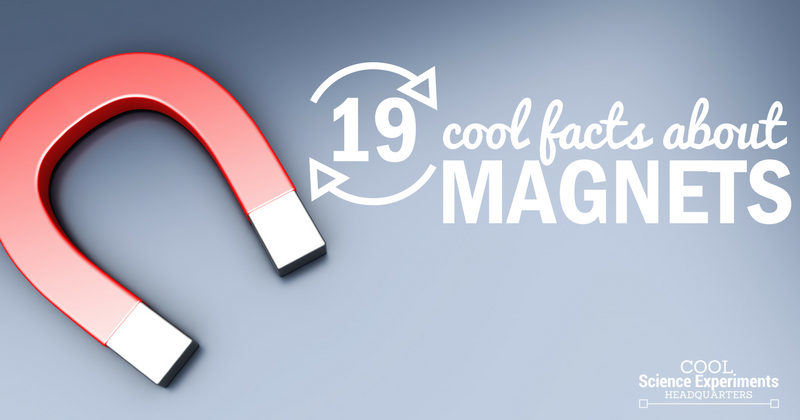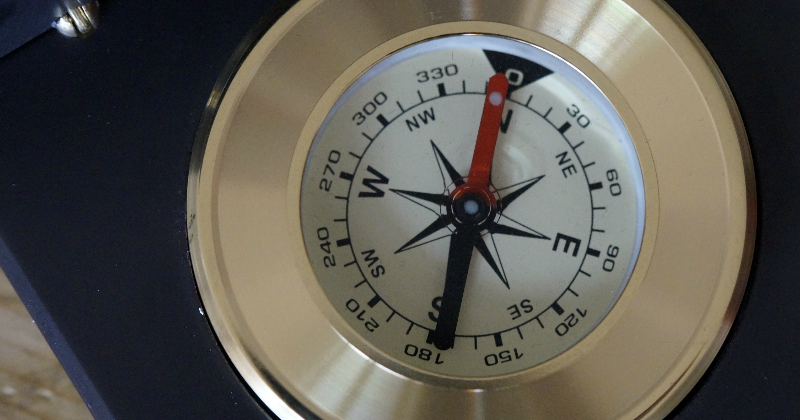Magnets are a big part of our everyday lives. From our cars to computers, to the great earth we walk everyday, magnets are everywhere. Below are some cool facts about magnets that will surely peak your interest and have you excited for more.

Fun Facts About Magnets
Some magnets are found naturally in the earth. Lodestones are natural magnets made from a substance called magnetite.
Other magnets are made from magnetic materials like steel, iron, nickel and cobalt. Magnets can also be made from copper and aluminum.
Magnets can be found in many common household items such as telephones, computers, stereos, refrigerators, TV’s and VCR’s.
Over 80% of all households in the US have magnets on their refrigerator. Are you displaying your kids artwork on your fridge right now?

Some farmers give their cows a magnet to swallow. This small magnet attracts nails and wire a cow accidentally eats. Without the magnets, the metal would pass through the cow’s stomach and damage the cow’s other organs.
Breakfast cereal often contains iron. Some cereals contain enough iron that it’s pieces are attracted to a magnet.
Did you know that you can easily turn common items like paperclips and iron nails into a temporary magnets? A temporary magnet acts like a permanent magnet when it is within a strong magnetic field. However, a temporary magnet looses it’s magnetism when the magnetic field disappears.
Check out the Use a Magnet to make a Paperclip Chain Science Experiment to see a temporary magnet in action.

The ends of a compass needle always point toward earth’s north and south magnetic poles.
If you attach a bar magnet to a piece of wood and float it in a bowl of water, it will slowly turn in the water until the magnet’s North Pole points towards the Earth’s North Pole. Temporary magnets will do the same thing.
Check out our Floating Needle Compass Experiment to watch this happen.
A magnet always has north and south poles. Cutting a magnet in half makes two magnets, each with two poles.
Hammering a magnet will cause it to loose its magnetic properties. Heating a magnet is another way to take away it’s magnetic properties. This is because the molecules lose their north-south alignment and get arranged in random directions.

The Earth of one big magnet. This is because the Earths solid iron core is surrounded hot molten iron that is moving around it. This churning iron creates an electric current that generates a magnetic field around the planet.
The Earth’s magnetic field is 1,000 times weaker than a typical bar magnet.
Did you know earth’s magnetic poles are always moving? The poles move an at average speed of 27 miles (43 kilometers) per year.
Earth, Saturn, Jupiter, Neptune, and Uranus are the only planets in our solar system with magnetic fields.

Cranes use huge electromagnets to pick up scrap metal in junkyards.
Electromagnets use electricity to create their power of magnetism. They can be turned on and off when the electricity is turned on and off.
Powerful electromagnets are used in high-speed trains, called Maglev trains. These these trains will float over it’s track, reducing friction and allowing the train to run very efficiently.
Many roller coasters use electromagnets to push the cars along the tracks.

This was very helpful, with one click i got all the information i needed to do my work in class!
Same!
Yes it helped me too! thanks for the help from this artical!
Helped me for my Science exhibition
thank you so much it really helps me soo much
Thank you a lot. Although it mainly helped me finish, I just need ONE more fact about electromagnets 🙁 🙁 🙁 🙁 🙁